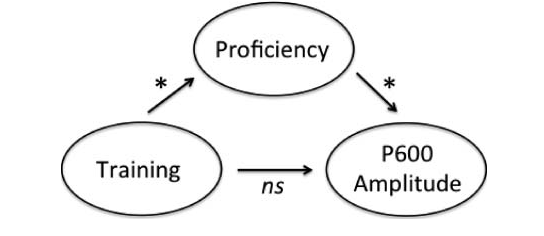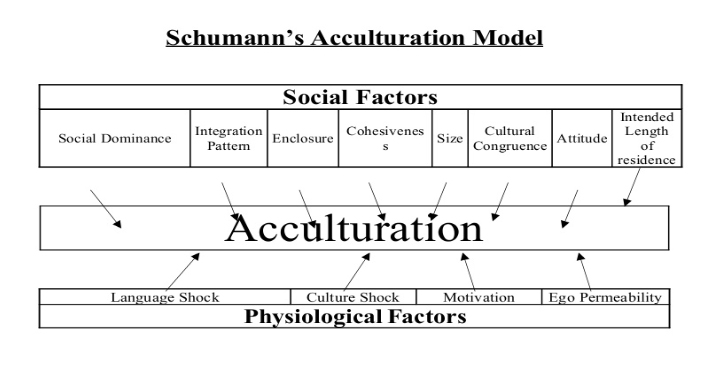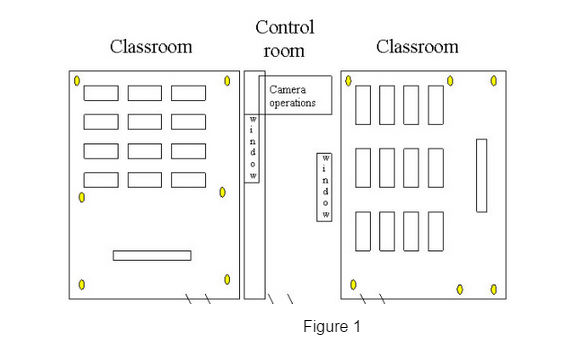Contents
Introduction
Second language, also referred to as L2, is defined as a language mastered after a speaker’s first language; it is an additional language obtained in a naturalistic environment, after a speaker’s native tongue, and can be the third or fourth language learnt. There are various different opinions on what it means to acquire L2 but we believe it is deemed as when a speaker is able to read and write fluently in that language, and we strongly believe that the acquisition of this second language is affected by many factors, of which social environments and cognitive behaviour have the most influence.
The study of second language learning has been gaining interest in recent years. Research has been conducted to study many aspects of second language learning including the effects of learning techniques and social environment, and mental processing and storage which have profound effects on the L2 learner’s ability to process their second language.
Cognitive
The two types of learning methods that will be frequently discussed in this chapter are the implicit type and explicit type of learning. More often than not, the types of teaching methods used correspond directly with the learning methods acquired by the participants, which is to say that explicit teaching will usually involve explicit learning as well. Implicit teaching and learning functions in a similar way as well. It is important to define these two types of learning methods to make sure that both the reader and the chapter are of the same understanding about these two methods. Implicit learning occurs when learners direct more attention and effort into deciphering a language, forming their own generalisations based on their own analysis. Explicit learning occurs when the learner is taught the metalinguistic grammar rules of a language from a third party, usually through formal instruction.
There is much research that have obtained results which show that implicit training triggers native-like neurochemical changes in the L2 learner’s brain, as opposed to explicit training which does not. Based on the results of a study on the differential effects of explicit and implicit second language training on the achievement of native-like brain activation patterns for L2 syntactic processing carried out by Morgan-Short, Steinhauer, Sanz and Ullman (2012), the L2 that was tested was an artificial language with a syntax similar to the syntax structure present in Romance languages. The artificiality of the L2 introduced in this study acted as a control, allowing for a large range of easily controllable factors, such as amount of exposure and the dissimilarity of the language to the speaker’s L1. The language, however, is simple in terms of syntax and structure, hence it lacks the sophistication of the languages in the world, which were subjected to the natural evolution of language. The nature of the training program also did not directly affect the performance of the group, with both groups displaying no significant difference in performance at either low or high proficiency.

Figure 2 Flowchart of presence of event-related potentials based on the type of learning method employed
However, the neurological aspects are significantly affected, suggesting the difference in cognitive systems employed to learn by participants of the respective group. In contrast, electrophysiological (ERP) measures revealed striking differences between the groups’ neural activity at both proficiency levels in response to syntactic violations. ERPs reflect real-time scalp-recorded electrophysiological brain activity of cognitive processes that are time-locked to the presentation of target stimuli. According to Park (2012), the P600 reflects syntactic processing and the N400 component reflects semantic processing. According to Morgan-Short et al (2012), the ERPs activated in the brains of the participants in the implicit learning group closely follow a pattern typical of native speakers. N400 is activated only by participants of the implicit training group, even at a low proficiency. This suggests that implicit training allows for a subconscious understanding of semantic and syntactic structures in the target L2. Although the P600 is reminiscent of native-like processing, this response pattern as a whole is not. Thus, only implicit training led to an electrophysiological signature typical of native speakers. Overall, the results suggest that adult foreign language learners can come to rely on native-like language brain mechanisms, but that the conditions under which the language is learned may be crucial in attaining this goal.
Although this study demonstrates the distinct effects of the types of training involved, the next study explores an alternative situation, whereby the neural mechanism is not always affected by the type of learning method involved.
Batterink and Neville (2013) found that the neural mechanism tapped when using a language is directly linked to the proficiency of the speaker and is not affected by the method of learning the language.
In their study, participants with English as their L1 were introduced to a miniature novel language (French). These participants were divided into two groups whereby one group (implicit learning) was not told of the tasks that will be carried out and another group (explicit learning) was informed of the underlying grammar of the novel language and also informed of the grammaticality judgement tasks after the training phase.
Before the analysis of the results, the participants were divided into 3 groups:
Group 1 – implicit low proficiency (focused on vocabulary only)
Group 2 – implicit high proficiency (focused on vocabulary and grammar)
Group 3 – explicit high proficiency
Even though the participants from Group 2 did not perform as well as those in Group 3, it was observed that the same neural mechanisms were elicited in the judgement tasks; similar to that of native speakers. This shows that explicit knowledge can be acquired through multiple learning methods and is needed to make grammaticality judgements. The similarity in the neural mechanisms tapped also shows that attention and awareness are integral to acquiring L2 syntactic rules since the process is still malleable in adults and is affected by the environmental input. Therefore, learning conditions affect the proficiency of the L2 learners, which in turn allows their neural mechanism to function similarly to native speaker.
In studying conditions affecting proficiency in a language, the opportunity for consolidation of patterns and rules of a new language for L2 learners is also important. To study the importance of the opportunity for consolidation, Gaskell et. al. (2014) performed a study on the effect of sleep on language processing. Their study tested the consolidation of phonotactic constraints and its impact on the current mental lexicon.
The participants of their study were exposed to one block of 48 sequences of 4 consonant-vowel-consonant syllables in the pre-interval session. The distribution of the letters were as such:
onset – /h/,/n/,/m/,/g/,/k/,/s/ if vowel is /æ/, and /f/ if the vowel is /I/
coda – /ŋ/,/n/,/m/,/g/,/k/,/f/ if vowel is /æ/, and /s/ if the vowel is /I/.
The participants then had their interval activities, either a 90-minute nap or a 105-minute movie. Following the interval, the participants were exposed to 2 sets of 48 sequences, a recognition test and a generalisation test.
The participants performed uniformly well for the recognition test. On the other hand, the sleep group outperformed the other group, showing familiarity with the phonotactic rules in the syllables that were exposed to them and also the ability to generalise these rules. However, the participants in the sleep group were unable to explain the rules that they had engaged in the generalisation test.
The implicit knowledge that the sleep group acquired shows that the integration of recent experiences into the mental schema had occurred during sleep since the no-sleep participants did not have the same capabilities as the sleep group. However, from the results of the two tests, first order constraints (syllabic position of isolated phonemes – tested by the positioning of /h/ and /ŋ/) did not require sleep for integration while second order constraints (phoneme combination – tested by the positioning of /f/ and /s/ according to the vowels) requires sleep to allow an opportunity for consolidation. From this study, it can be seen that on top of the learning strategies, learners of L2 also requires sufficient rest so that there is an opportunity for the mental schema to be updated.
In conclusion, one needs to consider the target languages in question before drawing a firm conclusion about the benefits of explicit or implicit training methods. The results by Morgan-Short et al(2012) and the results by Batterink et al (2013) might seem contradictory but it is extremely difficult to draw a direct comparison between the results of the the respective study. Firstly, the former study explores the teaching methods of an artificial language which is not as sophisticated as French, which was used in the latter study. When considering the cognitive effects of learning a second or foreign language, closely studying the neurochemical changes and neural patterns in the brains of the L2 learners is extremely useful in charting the process of learning and developing new methods to achieve native-like fluency in a language.
After having discussed the cognitive aspects of L2 language learning, one also needs to consider the social factor so let us now take a look at the sociolinguistics factors that also play a major role in the learning conditions on L2 learning.
Sociolinguistics
Studies have shown that students with little or no formal education usually have different personalities from students with formal education. Low education learners usually have an introvert personality as compared to high education learners that are extroverts. This difference in personalities also affects their socio-interactive practices which have repercussions of the learning of their second language. A number of empirical studies have been done to try to explain the effects of outgoingness versus reservedness on second language acquisition (TESL Canada Journal vol. 5, no.1, 1987)
Schumann’s Acculturation Model
3 types of social structure that can affect acquisition of second language
- sociolinguistic setting
- specific social factor
- situation factor
- figure 1
Social dominance: If the second-language learning (2LL) group is politically, culturally, technically or economically dominant to or subordinate to the target language (TL) group, social contact between the two groups will tend not to be sufficient for optimal target language acquisition. If they are nearly equal in status, then there will be more contact between the two groups and thus, acquisition of the target language will be enhanced.
Assimilation, preservation, and adaptation: The best condition for L2 acquisition is obtained when the 2LL group wants to assimilate into the TL group. The second best condition occurs when the 2LL group wants to adapt to the TL culture for intergroup interaction without assimilating to it. The least favorable conditions obtain for acquiring the L2 when the 2LL group wishes to remain separated linguistically and culturally from the TL group.
Enclosure: The more the 2LL groups share social institutions such as schools, churches, workplaces, clubs, and others with the TL group, the more favorable the conditions will be for L2 acquisition.
Cohesiveness and size: The smaller and less cohesive the 2LL group, the more likely the contact with the TL group and the more favorable the conditions for L2 acquisition.
Congruence: The more similar the culture of the two groups, the more likely there will be social contact and thus language acquisition.
Attitude: The more positive the views of the 2LL group toward the TL group, the more favorable will be the conditions for L2.
Intended length of residence: The longer L2 learners plan to remain in the L2 environment, the more likely it is that they will feel the necessity of learning the TL.
The psychological factors, mainly affective in nature, are secondary important. To him, the following factors affect the psychological distance:
- Language shock (Learner’s confusion when using L2)
- Culture shock (learners’ disorientation as a result of culture differences).
3.1 Acculturation: Types, Stages and Kinds of Learning
Trawinski (2005) cites social and psychological distances determine how much input the learner will be exposed to, and how much input will be converted in to intake. Schumann (1978) believes that the level of language proficiency the learner achieves strictly depend on the degree of acculturation. He distinguishes the functions of language, which may also be considered as the three stages of language development:
- Communicative function ( the transmission of referential information only
- Integrative function ( the mark a membership of a particular social group)
Multimedia Adult English Learner Corpus (MAELC, 2001-2005)
- 2 classrooms, 700 students
- establish socio-interactive practices
- 6 video cameras(of which 2 are mobile operated manually from outside class),focused on students in pairs to check on learner-learner and teacher-learner task interaction, other 4 cameras focused in the class, and 5 wireless microphones alongside in total for high quality audio and video documentation.
- Figure 1
Basic English Skills Test (BEST, 2006)
- assessing literacy using standardized measures
- scores of writing and reading divided into 2 scales, then summed into a final scale score.
- to check if BEST correlates with behavioural measures by obtaining average scores.
- results showed that introverts obtained a lower score.
Introvert Vs Extrovert
Studies have shown that low education learners are usually introverts, and they rarely speak up or ask others for help. Introverts are afraid of embarrassing themselves by speaking incorrectly or by not being able to carry their message accurately across, thus may try to avoid speaking opportunities that would otherwise aid their learning.
However, on the other hand, high education learners are the complete opposite. They are extroverts that do not hesitate to speak up or ask for advice and help in classes. This has been shown in researches and tests and extroverts have shown to have better results in reading and writing tests.
The MAELC and BEST tests have shown that the extroverts are more vocal and active during lessons, while the introverts keep to themselves. Scientists think that extroverts fare better in language performance, scoring higher marks for the reading and writing tests. This being said, research are still inconclusive(Dewaele & Furnham, 1999).
Despite all these, it is difficult to measure exactly if introverts or extroverts are better in second language acquisition because there are a lot of other factors to take into consideration, such as the level of interest of the learner, the similarity of the second language as to their first, and the attention span of an individual. Different learners respond differently to the same input as a function of the ways in which their personality affects their perception and interpretation of the language.
Also, after close observation, researchers have come to realise that low educational learners only behave as introverts at different times as compared to high educational learners, and do not keep to themselves all the time. This may imply that introverts could actually learn faster and better at certain stages of their life and score better at the reading and writing tests.
Results from these tests seem to have shown that introverts are actually weaker in second language acquisition as compared to extroverts, but we cannot assume that this is true because there are many other factors that have to be considered, such as the attitude and aptitude of learners, as well as similarities of the L2 to the L1. Also, other studies have actually shown that introvert behaviour occurs under certain conditions and is not constantly portrayed for each individual.
Conclusion
In conclusion, one needs to consider the target languages in question before drawing a firm conclusion about the benefits of explicit or implicit training methods. The results by Morgan-Short et al(2012) and the results by Batterink et al (2013) might seem contradictory but it is extremely difficult to draw a direct comparison between the results of the the respective study. Firstly, the former study explores the teaching methods of an artificial language which is not as sophisticated as French, which was used in the latter study. When considering the cognitive effects of learning a second or foreign language, closely studying the neurochemical changes and neural patterns in the brains of the L2 learners is extremely useful in charting the process of learning and developing new methods to achieve native-like fluency in a language. Based on the results of the second study discussed in the cognitive linguistics section, the method of learning a language does not directly affect the cognitive functions of the speakers. The neural mechanisms that are tapped when using a language is directly affected by the proficiency of the individual in that language. Proficiency can be achieved through different learning pathways and also by allowing the consolidation of the rules of the new language, which occurs when sleeping.
References
Barjesteh, H., & Vaseghi, R. (2012). Acculturation Model for L2 Acquisition: Review and Evaluation. Advances in Asian Social Science 2(4), pp. 579-584
Batterink, L. and Neville, H. (2013). Implicit and Explicit Second Language Training Recruit Common Neural Mechanisms for Syntactic Processing. Journal of Cognitive Neuroscience, 25(6), pp.936-951.
Gaskell, M., Warker, J., Lindsay, S., Frost, R., Guest, J., Snowdon, R. and Stackhouse, A. (2014). Sleep Underpins the Plasticity of Language Production. Psychological Science, 25(7), pp.1457-1465.
Kutas, M. and Federmeier, K. D. (2009). N400 Scholarpedia, 4(10):7790. Retrieved from http://www.scholarpedia.org/article/N400
Morgan-Short, K., Steinhauer, K., Sanz, C. and Ullman, M. (2012). Explicit and Implicit Second Language Training Differentially Affect the Achievement of Native-like Brain Activation Patterns. Journal of Cognitive Neuroscience, 24(4), pp.933-947.
Park, S. (2012) The Effects of Neurochemical Changes on Language Development.Linguistic Research 29(1) 261-279. Retrieved from http://isli.khu.ac.kr/journal/content/data/29_1/12.pdf
Ramírez-Esparza, N., Harris, K., Hellermann, J., Richard, C., Kuhl, P. and Reder, S. (2011). Socio-Interactive Practices and Personality in Adult Learners of English With Little Formal Education. Language Learning, 62(2), pp.541-570.
Reichle, R. V. (2008). Syntactic focus structure processing: Behavioral and electrophysiological evidence from L1 and L2 french. Dissertation Abstracts International, A: The Humanities and Social Sciences, , 0165. pp. 172. Retrieved from http://repositories.lib.utexas.edu/handle/2152/18288.
Sun, R. (2008). The Cambridge Handbook of Computational Psychology. Cambridge: Cambridge University Press. ISBN9780521857413.
First Created Lim Pei Min, Sophie Ng Siok Yee, Muhammad Hidayat bin Abdul Khalid, AY2014/15 Semester 1



